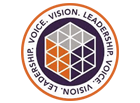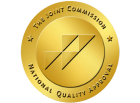As crystal meth abuse becomes more widespread throughout the U.S., many concerned individuals find themselves wondering how to keep themselves and their loved ones safe from the threat of addiction.
One of the best ways to make sure you and your family stay safe from the harm of methamphetamine is to know what crystal meth looks like and how to avoid it.
What Is Crystal Meth?
Crystal meth is a synthetic form of methamphetamine that is both colorless and odorless, as well as highly addictive. This stimulant drug is commonly abused for its intense and stimulative properties, capable of producing a high that lasts longer than its other forms.
However, these more extensive side effects also make crystal meth a more dangerous drug, posing a higher risk for dependence and overdose. Currently, crystal meth is classified as a Schedule II controlled substance due to its high likelihood of abuse and addiction.
There are several nicknames used to refer to crystal meth, including Crystal, Tina, Hot Ice, L.A. Glass, Quartz, and various others. It is typically used by smoking the drug using a glass pipe or injected directly into the bloodstream. Both of these methods are dangerous and should not be attempted.
According to the National Institute on Drug Abuse (NIDA), an estimated 1.6 million people suffered from a methamphetamine use disorder in 2021. Unfortunately, these numbers have not decreased over the years.
What Does Methamphetamine Look Like?
One of the most common questions people find themselves asking in regard to this drug is, how does meth look? Knowing what this drug looks like can help keep you and your loved ones safe from its dangerous side effects.
Methamphetamine can generally be found in one of two forms: crystal meth, which resembles glass-like rocks, or powdered meth, which has the appearance of a crystalline powder. However, these are not the only shapes and sizes this drug can come in.
Meth can also be found in the form of pills, liquids, and capsules. While most meth will be colorless or off-white regardless of its form, some dealers have begun using blue dye to disguise their products.
Change your life with one call.
We can help.
Signs and Symptoms of Meth Abuse
Methamphetamine is a highly addictive and dangerous drug, and its abuse can have serious physical, psychological, and social consequences. Because of this, it is important to know exactly what signs and symptoms to look out for when recognizing a meth addiction.
Some of the most common physical signs of meth abuse and addiction include:
- Reddening of the eyes
- Impaired speech and coordination
- Track marks from injecting needles into the skin
- Sudden loss or gain of weight
- Changed eating or sleeping habits
- Shaking in the hands, feet, or head
- Nausea and vomiting
- Excessive sweating
Those who abuse meth will also often display behavioral symptoms, including:
- Chronically acting tired, unfocused, or “out of it.”
- Experiencing problems at work, school, or home.
- Constantly needing to borrow money or being in financial trouble.
- Periods of extreme depression or hyperactivity.
- Loss of interest in previously enjoyable hobbies and activities.
- Lack of personal hygiene and attention to appearance.
- Sudden mood swings and attitude changes.
These are just a few of the possible signs and symptoms a person may display when suffering from a meth addiction. If you recognize any of these signs in yourself or a loved one, it is important to seek professional help as soon as possible.
How Is Crystal Meth Addiction Treated?
Crystal meth addiction is a serious problem that can have devastating side effects on those suffering from this disease. However, it is possible to recover from this substance use disorder with proper treatment and support.
While there is no one-size-fits-all approach to the addiction treatment process, some of the most common treatment options used for meth addiction include:
- Detoxification: The first step in treatment is usually detoxification, which is the process of safely removing methamphetamine from the body. This process can be uncomfortable and even dangerous, so it’s important to do it under medical supervision.
- Residential rehab: This level of care involves living at a treatment center for an extended period of time to recover from meth abuse under constant supervision, providing a safe and structured environment to overcome addiction.
- Behavioral therapy: This type of therapy helps people understand their addiction, as well as learn how to cope with cravings and triggers, helping them to avoid relapse once they have completed treatment.
- Medications: Some medications, such as naltrexone and buprenorphine, may be helpful in treating crystal meth addiction by managing withdrawal symptoms and cravings during the recovery process.
In addition to these formal treatment options, there are also a number of self-help resources available for people with crystal meth addiction, such as 12-step programs and support groups that can provide a safe and supportive environment for people to talk about their addiction and recovery.
Meth Treatment at Royal Life Centers
Meth addiction is a serious disease that can have devastating side effects if not treated quickly and efficiently. At Royal Life Centers, we offer comprehensive and holistic treatment that addresses every aspect of your addiction.
Our compassionate approach to the recovery process gives you the support and structure you need to achieve long-term recovery. You will have access to a full continuum of care at our rehab facilities, including:
- Medical detox
- Residential treatment
- Partial hospitalization
- Intensive and standard outpatient treatment
- Medication management
- Behavioral and holistic therapies
- Sober living
- Aftercare support
We will work with you to build a treatment plan that specifically caters to your recovery needs. Reach out to us now to learn more about how our programs can help you, and get started on your journey to sobriety today!
No matter the severity of your substance abuse issues or personal treatment preferences, we offer a variety of services to meet each of your care needs. Call us at 877-RECOVERY today to learn more about our treatment programs and how you can get started on the path to recovery today!
REFERENCES:






